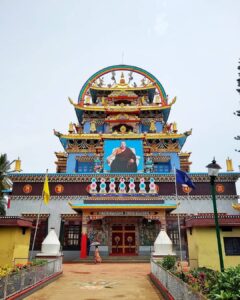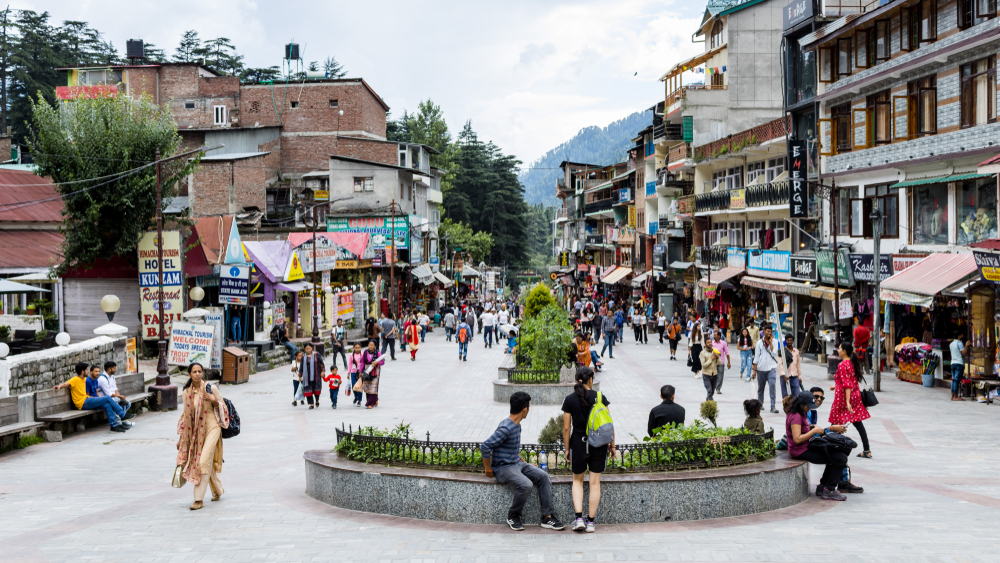Tibetan Monastery in Manali A Sanctuary of Peace and Culture
Located amidst the scenic landscape of Manali, the Tibetan Monastery stands as a symbol of peace, spirituality, and the vibrant Tibetan culture. This monastery is not only a place of worship for Tibetan Buddhists but also a cultural center where travelers can experience the beauty of Tibetan art, architecture, and spiritual practices. Visiting the Tibetan Monastery in Manali is a perfect way to connect with the region’s rich Buddhist heritage and find a sense of inner calm amidst the tranquil surroundings.

The History and Significance of the Tibetan Monastery
The Tibetan Monastery in Manali is one of the most important religious and cultural centers for Tibetan refugees who settled in the region after fleeing their homeland. It was built as a spiritual refuge where the community could continue practicing Tibetan Buddhism and preserve their cultural traditions. Over the years, the monastery has become a vital part of Manali’s cultural landscape, attracting not only worshippers but also travelers looking for a deeper understanding of Buddhism and Tibetan culture.
The monastery serves as a sanctuary for monks and practitioners, offering them a place to engage in meditation, prayers, and teachings based on the Buddhist philosophy. For visitors, it provides a glimpse into the monastic way of life and the profound sense of peace that comes with it.
Architectural Marvel of the Tibetan Monastery
The Tibetan Monastery in Manali is a beautiful blend of Tibetan architecture and Buddhist symbolism. The entrance to the monastery is adorned with colorful prayer flags, which flutter in the wind, carrying prayers and blessings to the heavens. As you step inside, you are greeted by intricately designed Thangka paintings—traditional Tibetan Buddhist scroll paintings that depict various aspects of Buddhism, from deities to important life events of the Buddha.
One of the most striking features of the monastery is the large golden statue of Buddha, which radiates serenity and peace. This statue is the centerpiece of the main prayer hall, where monks and devotees gather for their daily prayers. The vibrant colors, detailed murals, and the serene Buddha statue create an atmosphere of reverence and tranquility, making it an ideal place for meditation and reflection.
Prayer Wheels and Rituals
A significant part of the monastery’s spiritual practice revolves around the use of prayer wheels. Lining the outer walls of the monastery, these wheels are inscribed with mantras—sacred Buddhist prayers. It is believed that spinning the prayer wheels while walking around the monastery releases these prayers into the universe, bringing peace, compassion, and wisdom to all sentient beings.
Visitors are encouraged to participate in this ritual, allowing them to experience a small but profound part of Tibetan Buddhist spirituality. The gentle hum of chanting monks, the rhythmic spinning of prayer wheels, and the scent of incense in the air create a calming and spiritually uplifting experience for all who visit.
The Role of the Tibetan Monastery in Preserving Culture
In addition to its religious significance, the Tibetan Monastery in Manali plays a crucial role in preserving Tibetan culture. The monastery is home to a number of artisans and craftsmen who work on traditional Tibetan handicrafts such as Thangka paintings, carpets, and prayer flags. Visitors can explore the small shops around the monastery, where these handcrafted items are sold, providing a great opportunity to take home a piece of Tibetan culture while supporting the local community.
The monastery also hosts cultural events and festivals, where traditional Tibetan music, dance, and rituals are performed. These celebrations are a beautiful way for travelers to immerse themselves in the vibrant culture of Tibet while gaining a deeper understanding of the region’s spiritual heritage.
Best Time to Visit the Tibetan Monastery in Manali
The Tibetan Monastery is open throughout the year, but the best time to visit is during the spring and summer months from March to June, when the weather is pleasant, and the surrounding landscape is in full bloom. The autumn months from September to November also offer a good time to visit, with cool and clear weather making the experience even more serene.
During the winter months, the monastery takes on a different kind of beauty as the surrounding Himalayas are covered in snow, providing a peaceful and magical backdrop. However, be prepared for colder temperatures if you plan to visit during this season.
How to Reach the Tibetan Monastery
The Tibetan Monastery in Manali is conveniently located in the town center, close to the popular Mall Road. It is easily accessible by foot if you are staying in Manali, or you can hire a taxi or use local transport to reach the site. Being centrally located, it is also close to other popular attractions in Manali, making it an easy addition to your travel itinerary.
Nearby Attractions
While visiting the Tibetan Monastery, there are several other attractions in Manali that you can explore:
- Hadimba Temple: A famous ancient temple located just a short distance away from the monastery. The temple is surrounded by dense cedar forests and is dedicated to Goddess Hadimba, an important deity in the region.
- Vashisht Hot Springs: Located about 3 km from the monastery, these natural hot springs are a popular spot for relaxation and rejuvenation.
- Mall Road: The bustling commercial hub of Manali, where you can shop for local handicrafts, souvenirs, and taste the regional cuisine.
Conclusion
The Tibetan Monastery in Manali is more than just a place of worship; it is a window into the rich spiritual and cultural heritage of Tibetan Buddhism. Whether you are seeking inner peace, interested in learning more about Tibetan culture, or simply looking for a serene retreat amidst nature, a visit to the monastery will leave you inspired and rejuvenated. The calm atmosphere, spiritual practices, and vibrant art make the Tibetan Monastery a must-visit destination on your trip to Manali.





